Our perception of time is so variable, isn’t it? As is the changing perspective we have of concerns that loom large in the moment, and seem foolishly small in hindsight. I uploaded photos to this post shortly after the few days we spent in the mountains at the beginning of the month, and had managed to add some text before other bits of life got in the way. Coming back to finish now, that getaway is already becoming remote. Only three weeks ago, and the post is in danger of seeming stale-dated as another trip rolls quickly toward us.
But I’m going to finish it anyway, slowing down a bit to savour again in retrospect. . . to be grateful as well as to review and integrate the experience. And to remember that just before we left, I had been worrying about an update scheduled for the blog by the hosting service. The company had emailed to advise that I should ensure other updates had happened to which (given the time frame and my limited techie know-how) I could only shrug and cross my fingers).
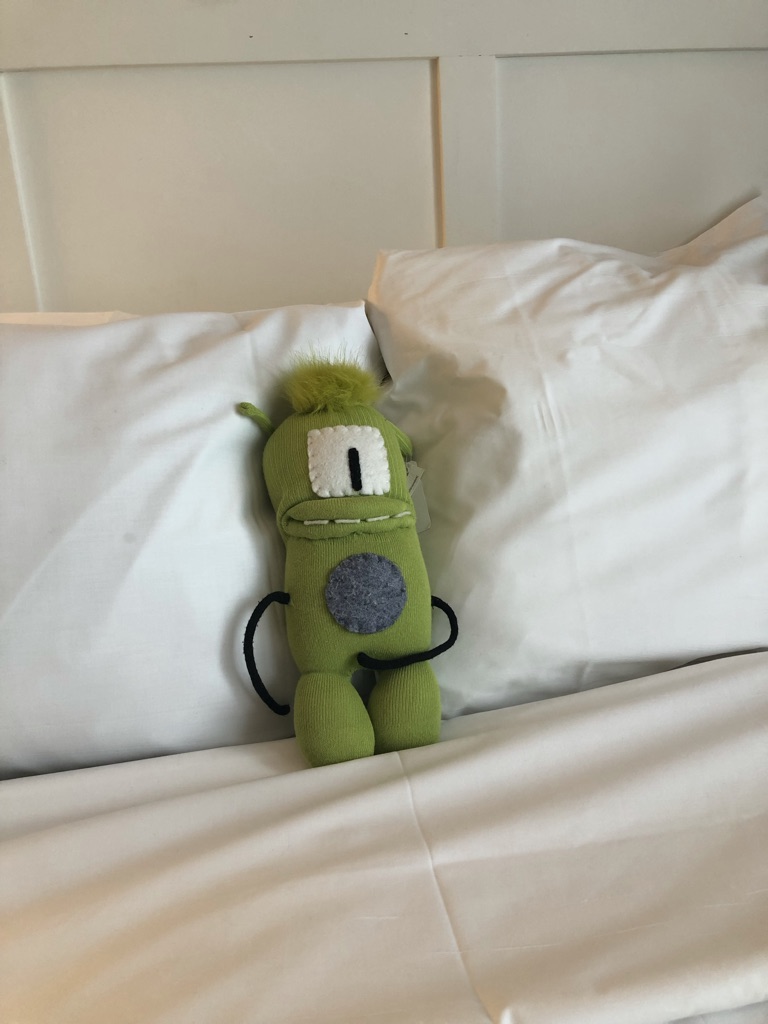
I tried not to worry. And that seemed to be the advice of this little monster welcoming us to our hotel room.
Instead, we walked
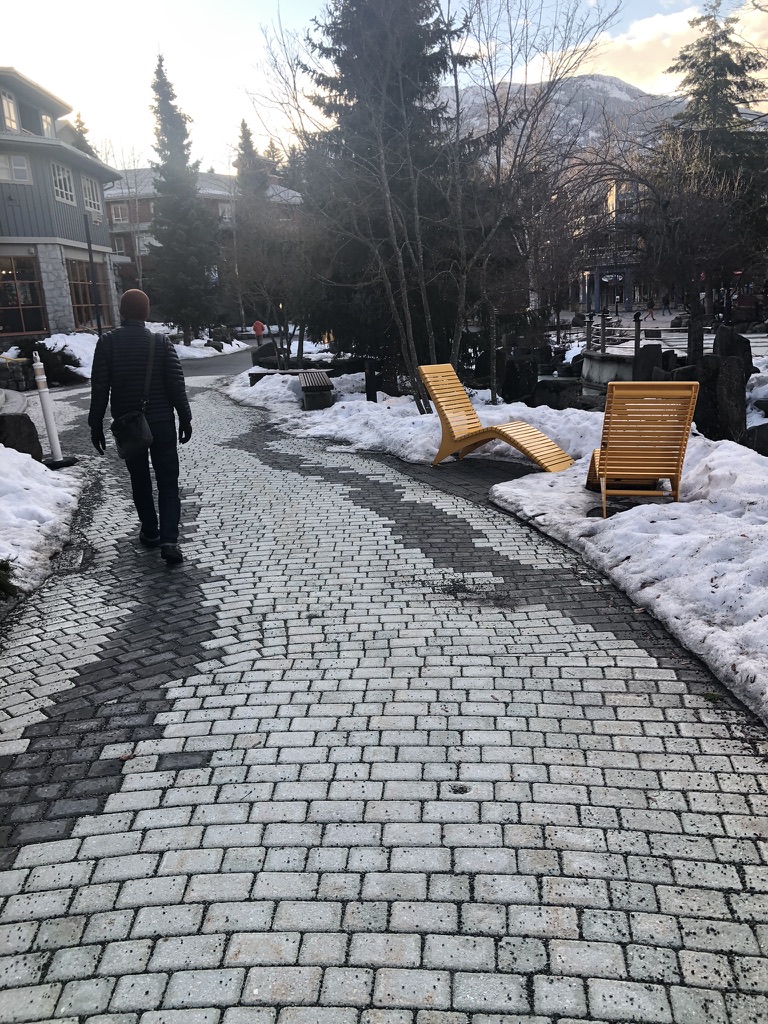
in beautiful surroundings. . .
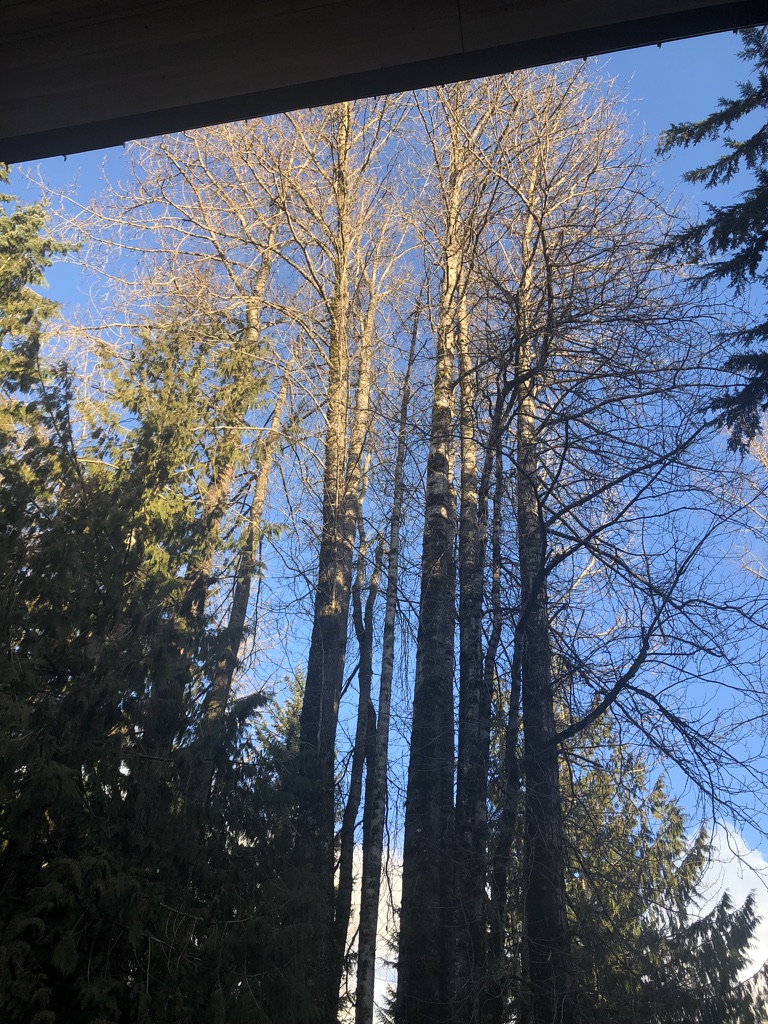
The conditions were not amenable to snow-shoeing, so those stayed in the trunk of the car.
But Paul managed to get his new skis out
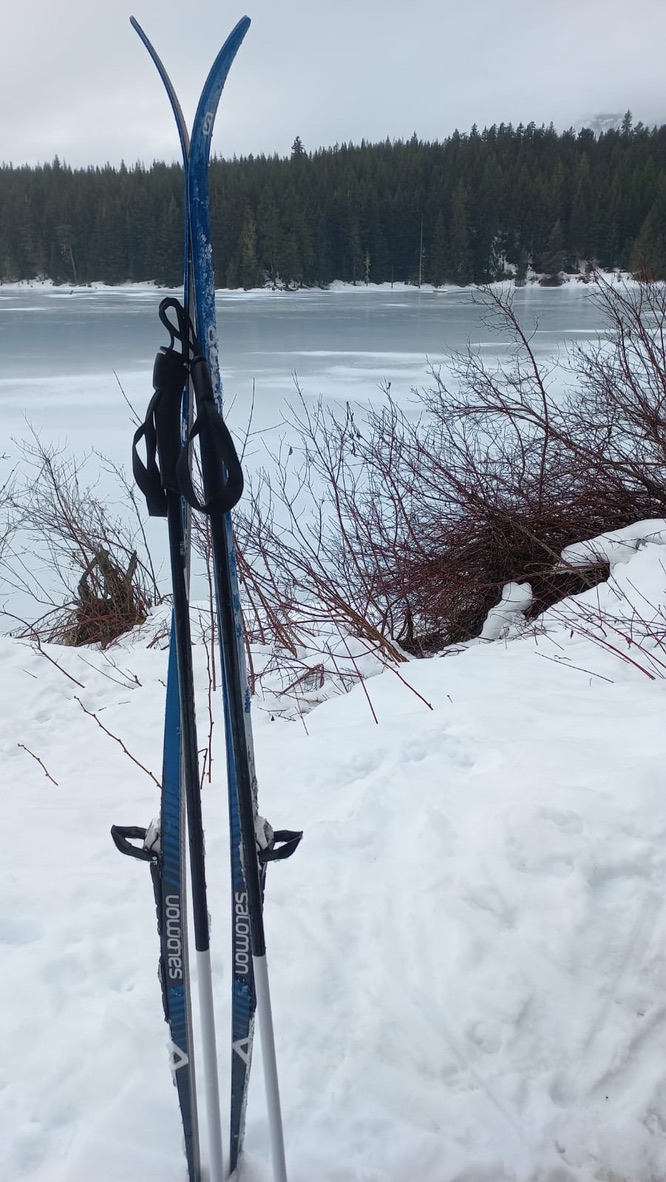
for a quick circuit around a small lake.
We enjoyed the splendid array of public art displayed throughout the village.
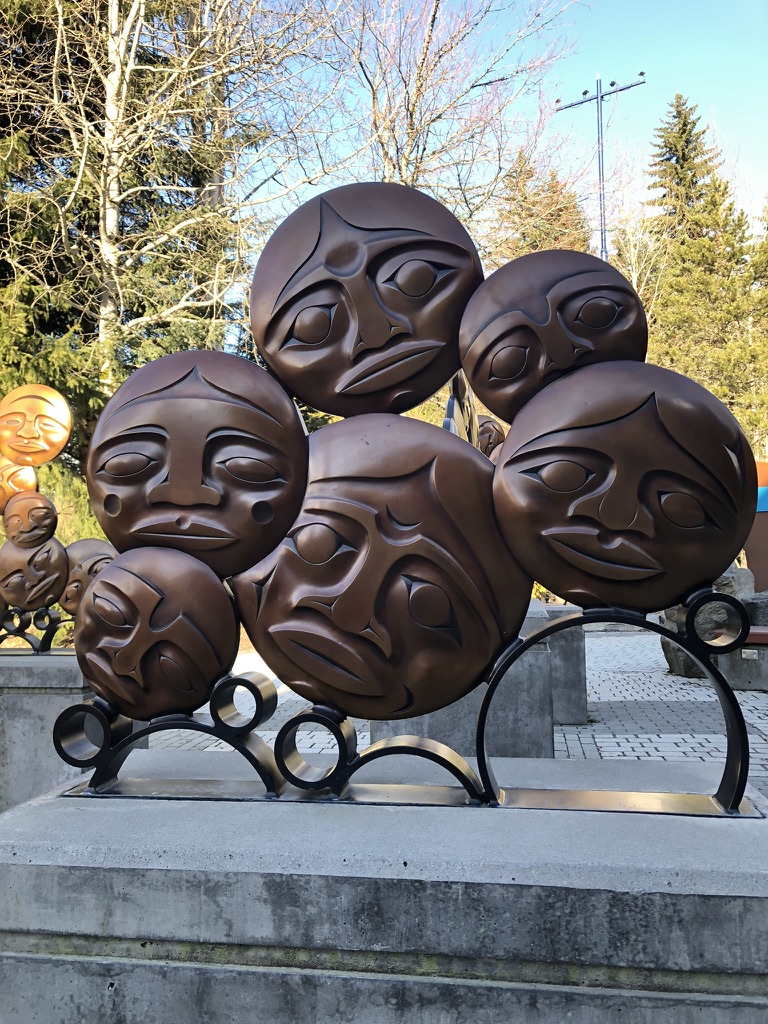
Musqueam/Coast Salish artist Susan Point‘s Timeless Circle Sculpture is a standout! (I posted a bit about a show of her work that I saw a few years ago).
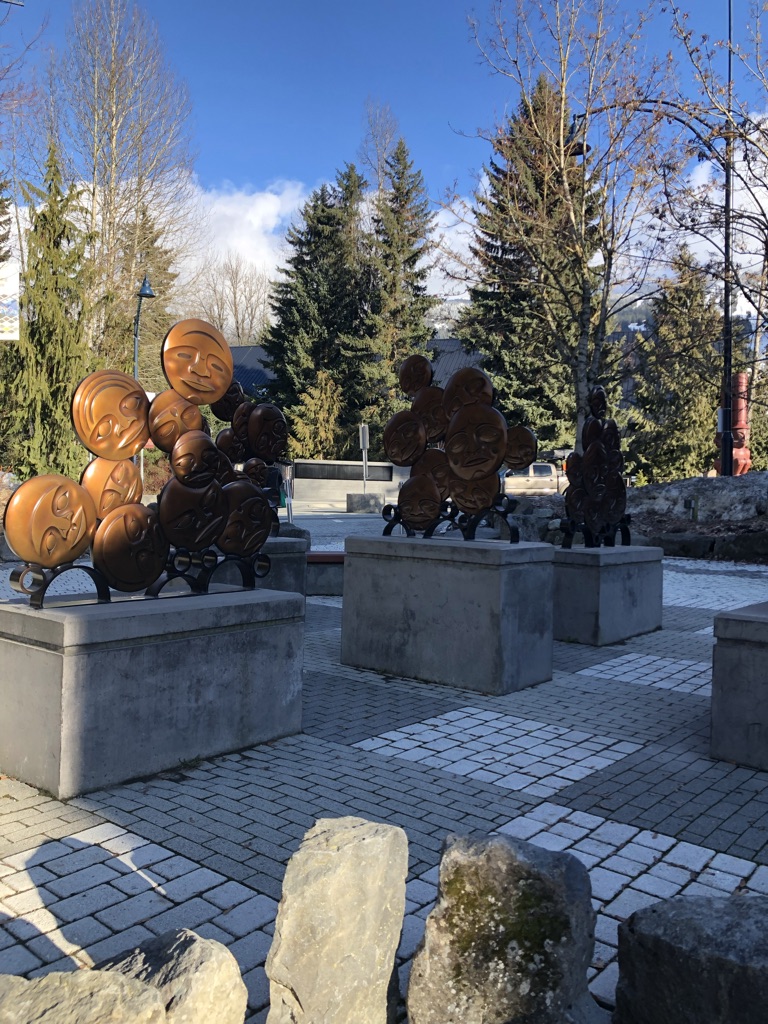
Wonderful to watch the sculpture change with the weather, the sun, the shadows. . .
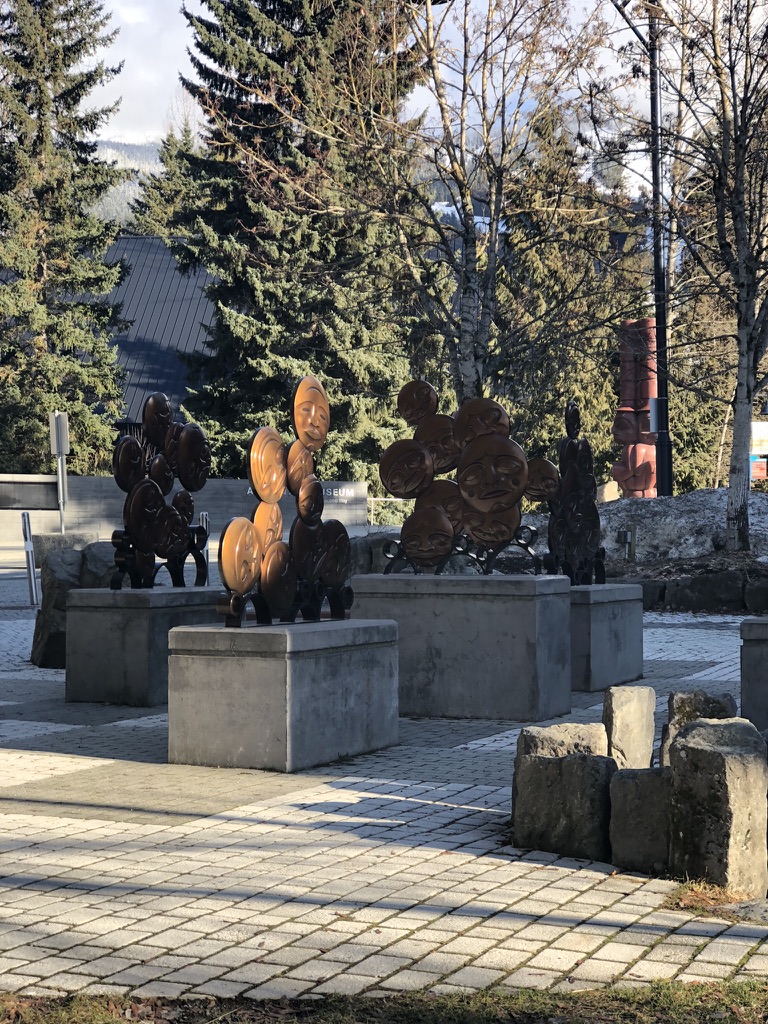
We were at the mountain resort (perhaps some of you watched the 2010 Winter Olympics held at Whistler, BC?), only a 90-minute drive from our Vancouver home, because our daughters had given us gift certificates for Christmas. One gift certificate for dinner and another for a visit to the wonderfully restorative Scandinave Spa
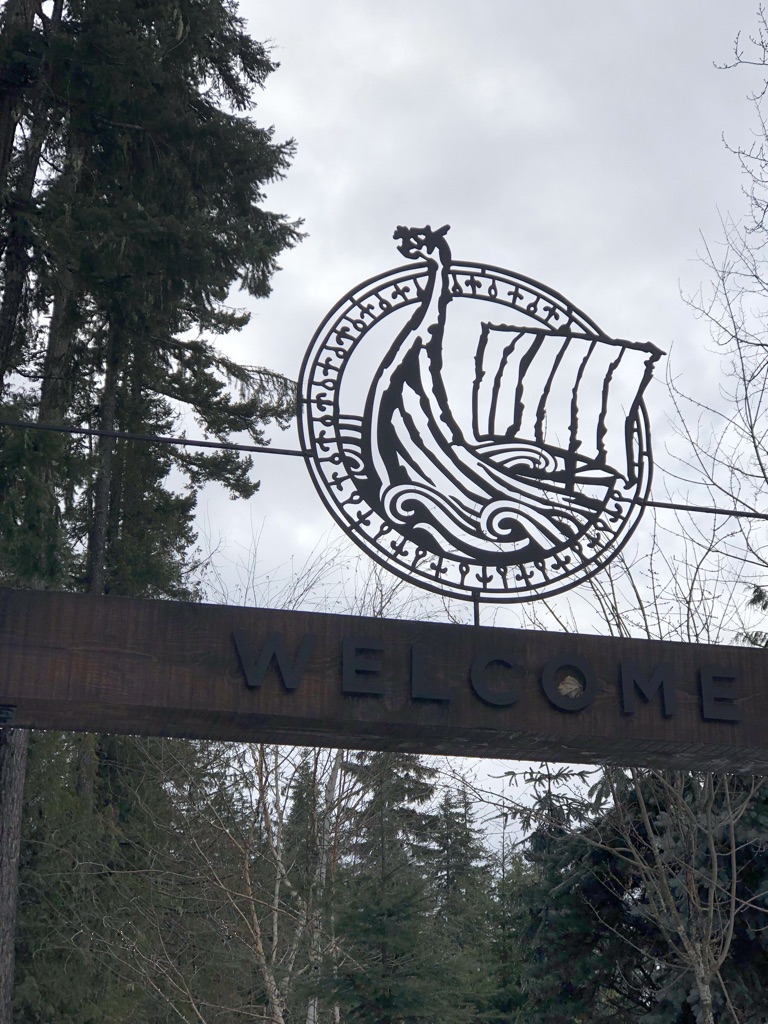
where we moved from hot pool to icy cold (waterfall or shower or small pool), the cold recommended for only 10-30 seconds, a plunge between heat treatments (which also included saunas, both dry and steam). All outside, surrounded by trees, on beautifully landscaped terraces spaced down a hillside. No photos for you — phones and other electronic devices were left behind in the lockers.
Two hours of tranquility, in which I realized how seldom I surrender to time, how seldom I allow myself to simply sit with or in it, without filling it with activity. Didn’t even bring a book, didn’t have music to listen to. . . Just breathed deeply and steadily and looked at the sky, felt the temperature of the air and the water on my skin.
Pause. . . .
A bit longer . . .
And then, that afternoon, after lunch and a nap (that little monster looking after me, while Paul scooted out for that ski around the lake). . .
We visited the Audain Museum — notable for the architectural vision of Patkau Architects who had to tackle the challenge of building in a floodplain of a creek in an area that regularly accumulates 40 feet of snow!
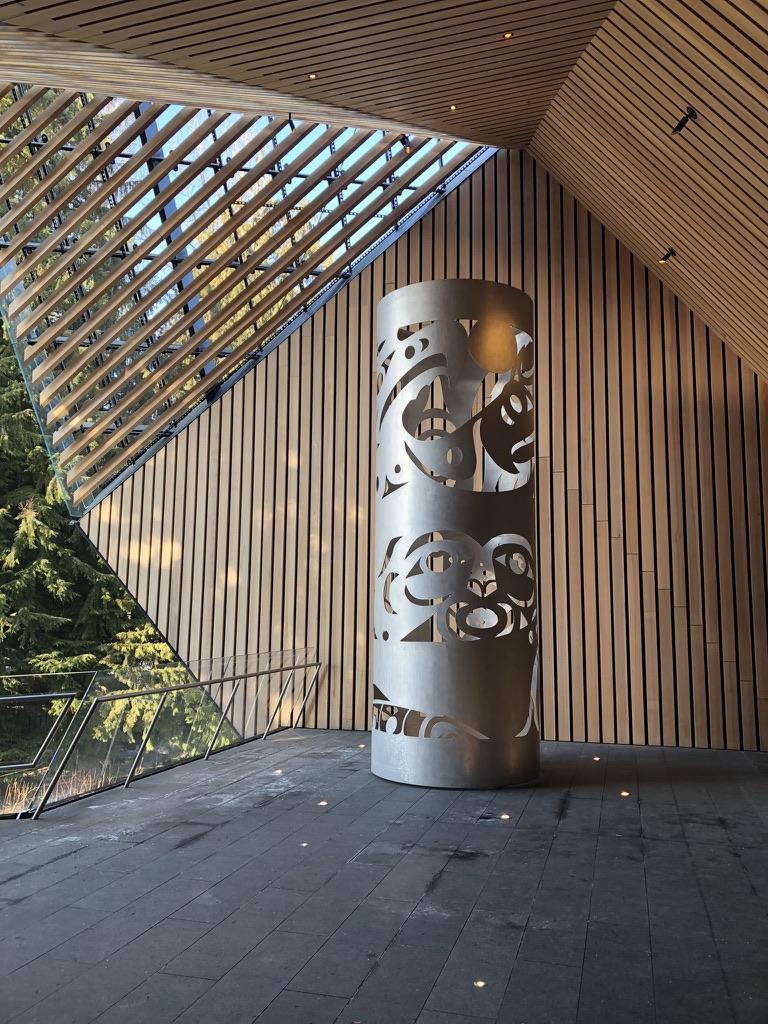
Read, on the poster below, what the artist, Xwalacktun, says about the inspiration for his sculpture, commissioned for the museum’s grand opening in 2016. You might also be interested to read this short article about another piece Xwalacktun was working on, the way it’s imbued with “truth and reconciliation stories,” and the way that it honours the strength of the Squamish people’s culture, acknowledging the trauma of the colonial period but simultaneously pointing to its ongoing renewal, its continued existence (the story represented by the house post He-yay meymuy (Big Flood), for example, is an ancient story but is being retold in very contemporary materials and techniques).
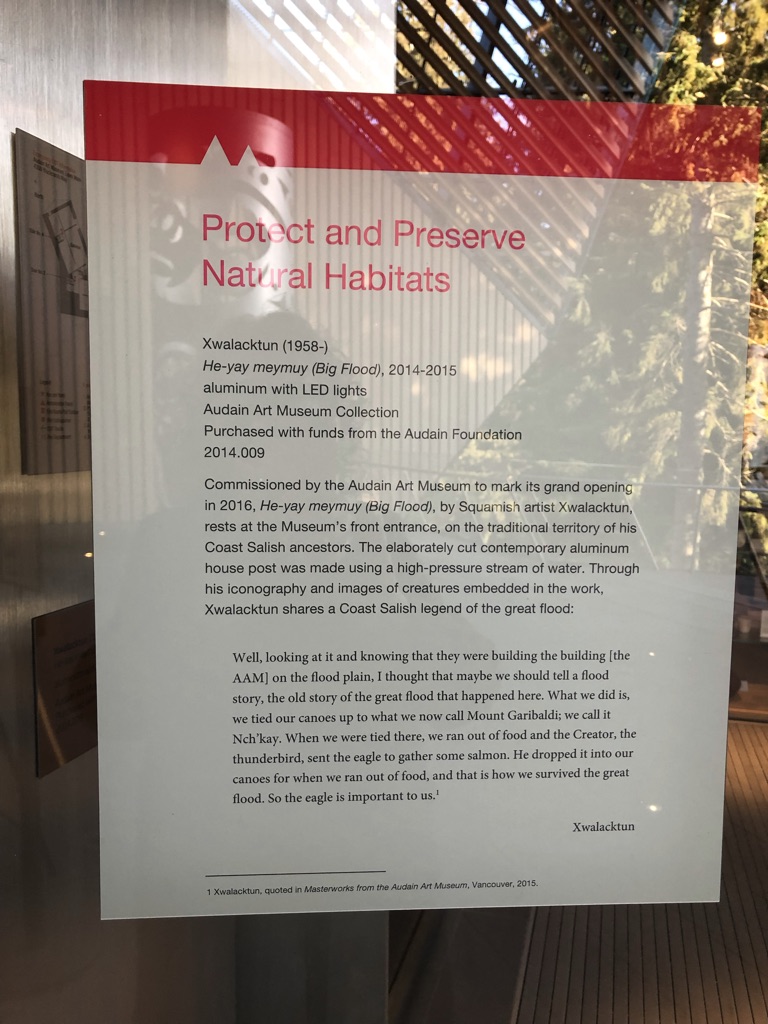
Probably influenced by my morning at the spa, I didn’t take as many photos as I might have; I hope these few might give you a sense of the building’s placement. Here, we’re standing underneath — imagine many more feet of snow in the depths of winter; imagine all the snow melting and rushing down the creek, overflowing. . . .
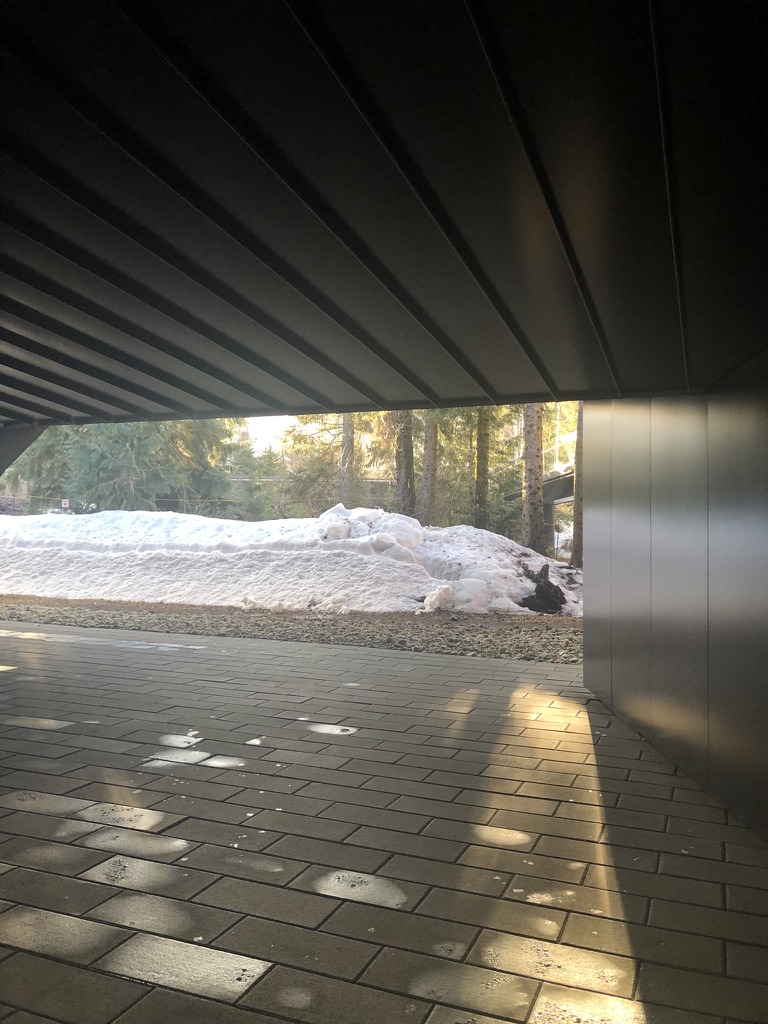
Looking back up at the entrance. . . those stairs, for me at least, evoke the seating that lines the walls of the “big houses” I’ve been in — as does the cedar, the rich scent. . .
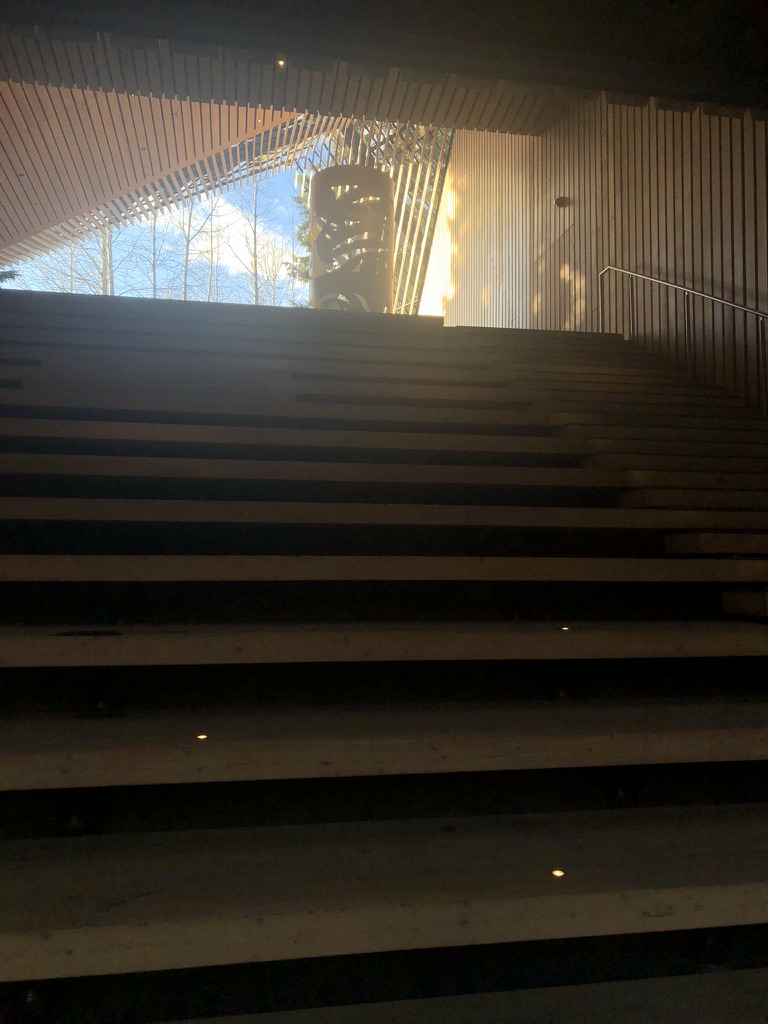
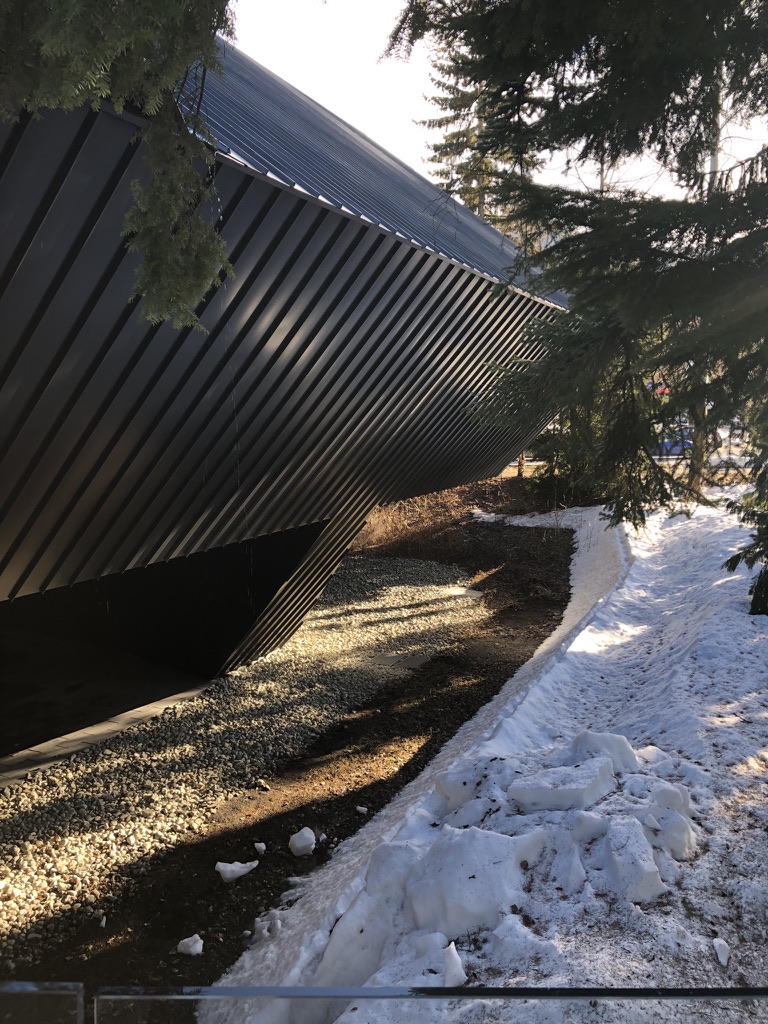
The museum was built to house an impressive private collection of British Columbia art. I loved much of it, although I think its “private collector” origins make it more idiosyncratic than comprehensively or even convincingly representative. Fair enough.
And of course I have qualms about the acquisition process for the older pieces of indigenous art (yep, my preference would be for re-patriation, as has been happening at a slow pace throughout the art world). But I was thrilled to see the larger sculptures by First Nations artists commissioned by the museum.
Of which this piece must be the standout! Haida artist James Hart’s The Dance Screen. A stunning, iconic work, brilliantly bringing an ancient culture’s stories and imagery into conversation with the contemporary world, asserting the Haida people as very much still here, still relevant, still with so much to contribute. Watch this four-minute Vancouver Art Gallery video to hear the artist speak about the work and to learn why this iteration of a traditional genre (the dance screen) has set a new standard for any future carver.
A monumental and moving work that speaks of place and culture and history and transformation — and it’s a work one could spend much time with. I’m drawn back, looking at this photo, wanting to be back in that room. . .
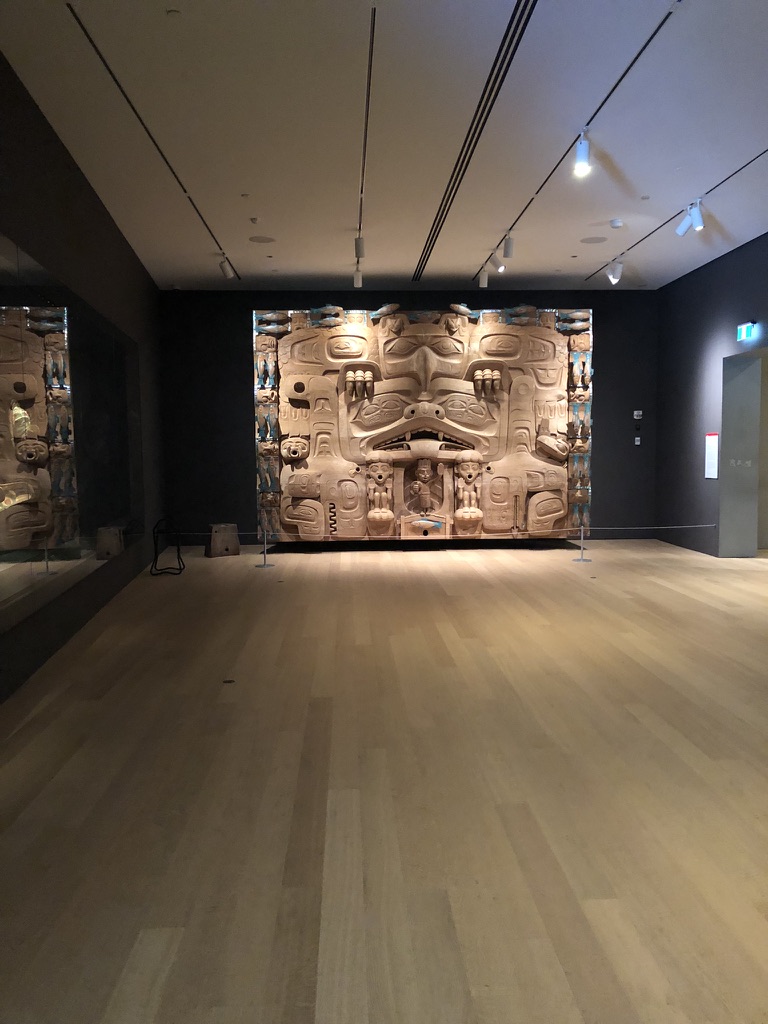
And then outside, the weather finally clearing to blue skies after our first two grey drizzly days . . .
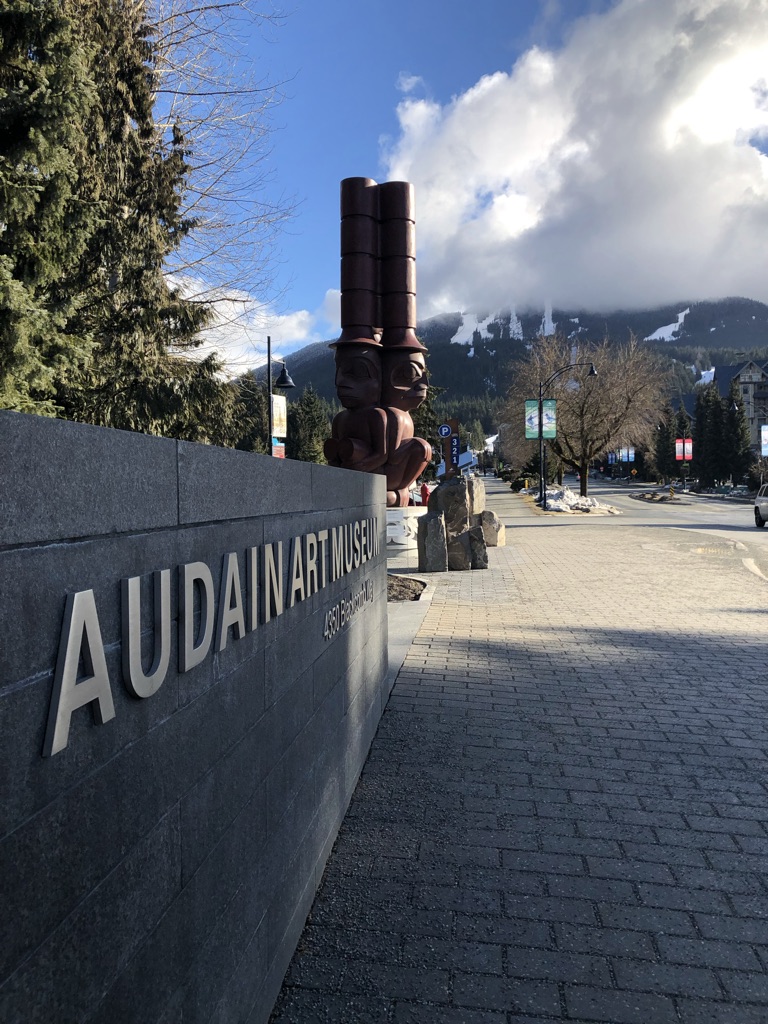
Just in time for us to see James Hart’s magnificent depiction of The Three Watchmen. I’ve seen other sculptures of these protective supernatural beings, common to Haida crest poles — there are a few in my urban neighbourhood, in fact, in front of some First Nations housing. But traditionally, these are carved in wood; here they’re worked in bronze. Read Haida artist (and hereditary chief of the Eagle clan, Haida nation) Hart’s comments about the significance of that medium in this article.
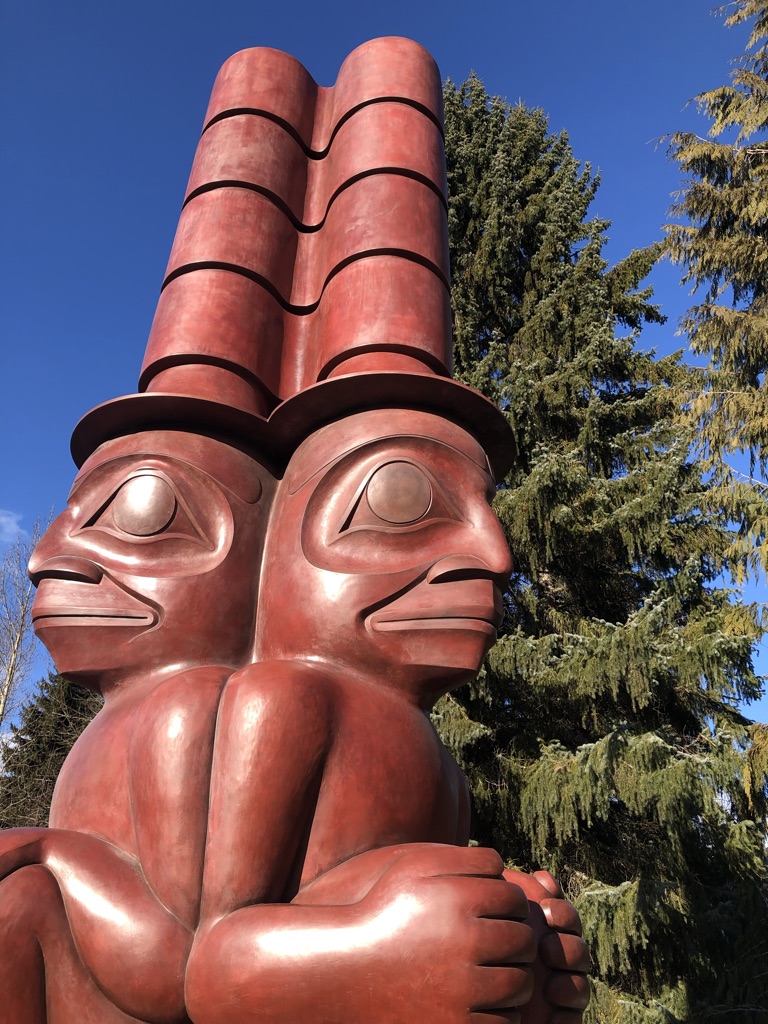
That same article will also tell you about the waterjet-cut aluminum sculpture that forms the base for the watchmen to sit on. The circular band is the work of two artists, Xwalacktun (Squamish) and Levi Nelson (Lil’wat). The article quotes the artists to explain connections between figures in the two sculptures, as well as the significance of not placing the Haida sculpture directly on the Coast Salish territory, but grounding it instead on the work of two artists whose nations shared this land.
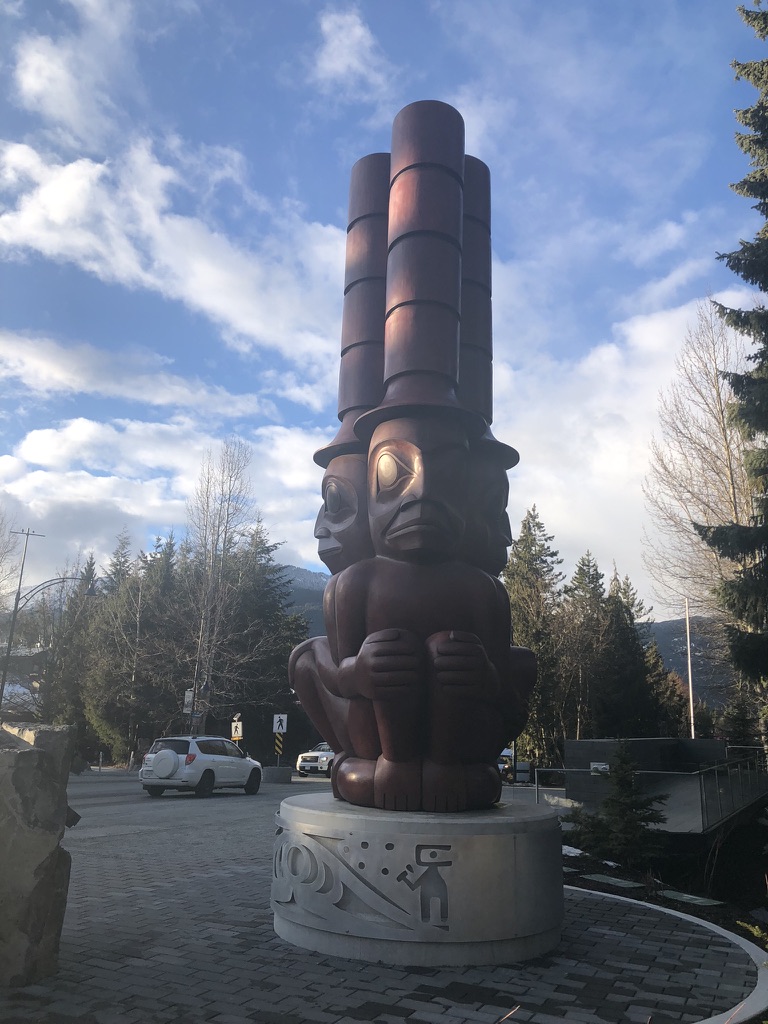
Our three days away, only 120 kilometres from home, were a striking reminder of what we have close by, even as we prepare to set off for Italy again. The stories, culture, and art rooted in this place are as rich as can be found anywhere, and they have much to teach us. . .
And then driving home. . .
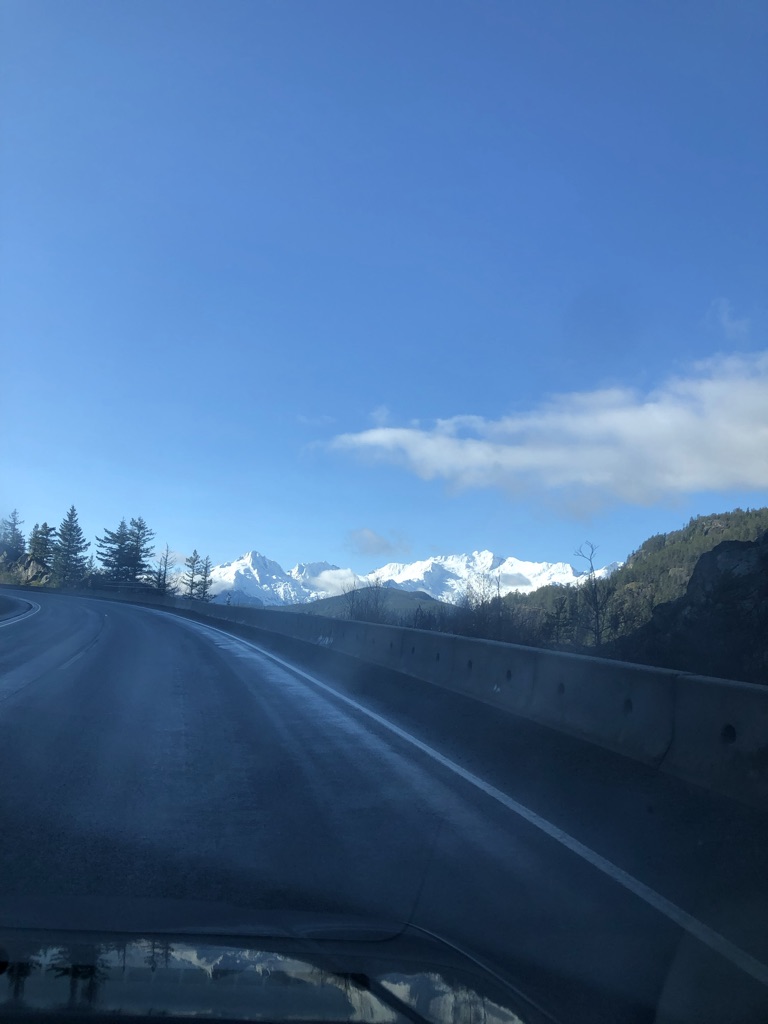
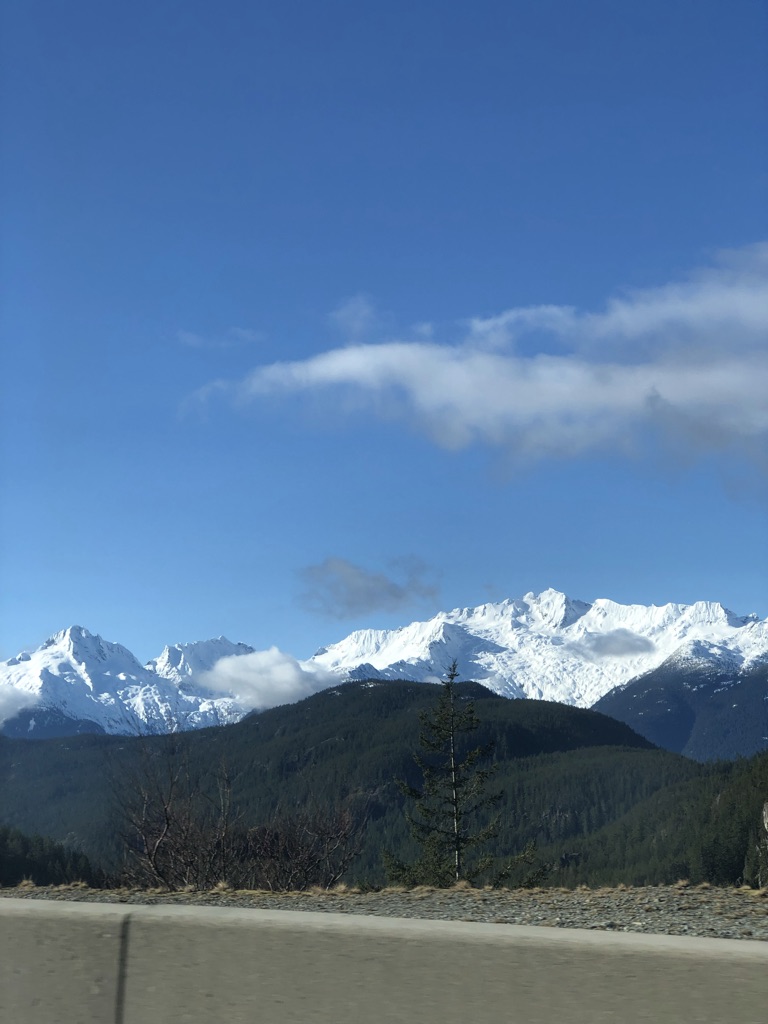
Mic drop, right?
Okay, that’s it for this weeks-late post. Hope you’ve enjoyed the brief jaunt to the mountains with a quick survey of some indigenous artists in my part of the world.
And while I might have dropped the microphone, not able to say much more after the eloquence of those mountains, please feel free to pick it up, figuratively, to leave any comment this post might evoke. Or simply to rejoice that, in the northern hemisphere, at least, Spring is officially here. And if you’re of the southern persuasion, you’re surely welcoming Autumn’s cooler days, right? Transitions. Possibilities. Mic’s right there. . . .
xo,
f
Wonderful post, Frances! I feel I’ve been on that trip with you. Thank you.
Author
Glad you enjoyed it, Carol! Would have been so good to meet up there!
Wow- I loved seeing Whistler through your eyes. Thank you so much for sharing your knowledge of the artists and their sculptures.!!!
Author
You’re very welcome — pleased you enjoyed it and appreciate you letting me know!
I’ve been living on the prairie for a long time now, but my love for the Indigenous art of the Pacific Northwest has never waned. Thank you for sharing!
And I’m so glad that you enjoyed the Scandinave Spa. It was such an amazing and relaxing experience when we visited several years ago. I was terribly disappointed when plans for a similar one in the Edmonton river valley fell through.
Author
It’s such powerful art, isn’t it?
And that Spa! Luckily it’s too far to visit often, because that would be hard on the budget and I can imagine getting into an expensive habit. Can also imagine how spectacularly the Edmonton river valley could have hosted one. . . too bad about that!
I always learn so much from your posts Frances. Thank you .
Author
Such encouraging words Caryn, thank you!
I’m glad you told us about your trip . It was interesting to see a new area through your eyes . The First Nation art sits well in such a beautiful natural setting & I know so much more about their culture now , thanks to you . It seemed just a little bizarre as we are still away in Somerset , a county of medieval towns , villages of thatched cottages & many ancient remains . Yesterday we visited a castle built in the 12th century , a Saxon church ( still in use ) & walked around grass covered saxon town walls built to repel the Vikings . The Saxons were around in the 5-11 centuries . So about the same time as the Squamish ? Perhaps not so different then .
Our drive home will not include majestic snow covered mountain peaks , just dreary motorways .
What a perfect getaway Frances! Something for, body mind and spirit. Walks in nature, beautiful and meaningful art, a bit of pampering. Someone to share it all with. And thank you for sharing with us.
Author
It was a good getaway, yes! And you’re very welcome 😉
Author
The oldest archaeological site in the territory of the Squamish is apparently 8600 years old https://www.squamish.net/about-our-nation/. — so definitely around in the 5th to 11th centuries. Perhaps as many connecting points as differences in the cultures — the oral tradition would still have been strong among the Saxons, for example.
Sorry about the dreary motorways, but the thatched cottages sound delightful — and your garden will be waiting for you, beginning to bound toward Spring!
Beautiful post,Frances,I’ve learned a lot (and I like it)
Such a great retreat!
Dottoressa
Author
It was good! Glad you enjoyed the post.
Thank you for sharing~ a wonderful escape for my coffee break!
Author
You’re so welcome!
Thanks for sharing the beautiful photos, Frances. Appreciated the links as well. x
Author
Pleased to know you enjoyed it — I found some of the links so interesting.
Beautiful scenery, striking architecture and artworks, very soothing to the soul.
Not sure that I could manage the chilly parts of the spa program though, snowy images appeal more than the reality. Once cold seeps into my bones I’m miserable. Ironically my husband grew up in a warm climate but loathes the heat while I revel in it, in spite of a pale skin that burns at a glimpse of the sun. After a stop start summer with unusual humidity we are into Autumn, the most settled part of our year with cool nights and clear still days before we need brace for the rain and bitter winds of Winter.
Author
The cold plunges take a bit of resolve, but there’s so much emerging now about the value of this kind of contrast (hot and cold) hydrotherapy that I was intrigued and I at least enjoyed a very good sleep that night. Normally, I prefer my climate very moderate — don’t do heat well at all, but Paul can soak it up.
Wonderful trip report! I’m utterly charmed by Susan Point’s work – those faces. I found myself nodding along with you about the tendency towards a lack of curation in private collections such as this one (just visited a museum in Lisbon that holds a private collection – it’s kind of all over the map!), and that unease surrounding the acquisition of indigenous art. The building location and structure are striking – thanks for taking us along.
Author
Isn’t her work great?
I guess it’s the nature of a private collection — I remember my response to The Getty in LA — loved the architecture, landscaping, found the art itself uneven.
The Audain, on the other hand, has a very solid representation of British Columbian art, but mostly tends to reinforce some cultural/critical preferences such that one could guess the demographic to which the collector belonged. And there’s an awareness of the market. . . .There are other narratives of BC Art that public institutions and various cultural groups do a better job of telling and showing. Fair enough, but could come with a sticker 😉
When I was in the Vancouver area for a vacation (years ago!) I was absolutely blown away by the indigenous art. I had no prior familiarity with it, so it really took me by surprise. Thanks for sharing these pics.
Author
I feel privileged to have so much of it in my daily life.
Frances, wonderful! What a beautiful spot, in so many ways. And I too have been curious about doing more hot/cold. I find it hard to find the courage in the shower;). This sounds like a real find. So glad you had a nice time.
Author
Yes, the shower is tough! Can’t make myself do that often. When we lived at the beach, I’d sometimes wade into the ocean, even in the winter, after a run — up to my hips if I was feeling feisty. But then the warm shower or bath was only two minutes away. . . .The spa was even better, just walking five metres from cold to hot — and with the sauna as an option!!
How I love your posts featuring the art you experience! I am hoping to be in Vancouver later this year (fingers crossed) and I will certainly review your blog before I go to see what I can see!
Author
I’m so pleased to know you enjoy these posts — they take longer, of course, but they also give me the push to do a bit of research and learn more about what I’ve seen.
I hope you make it to Vancouver — we all have our fingers crossed, it seems! 😉
What a lovely post and thank you for looking backwards and taking us with you. Do you not find that sometimes reflection adds another dimension to the memory of the experience?
Author
Oh, absolutely Mardel! Absolutely! The memories are burnished in reflection — as well, I find the time to add a bit of research to what I’ve seen.
I had no idea there was art to see in Whistler! Thanks for posting, Frances.
Author
And some wonderful architecture!
You’re welcome!